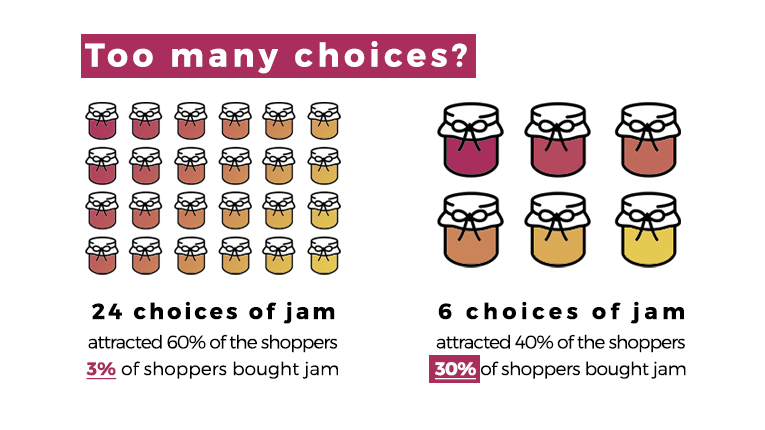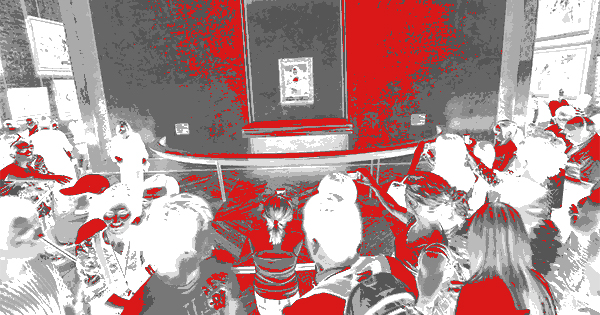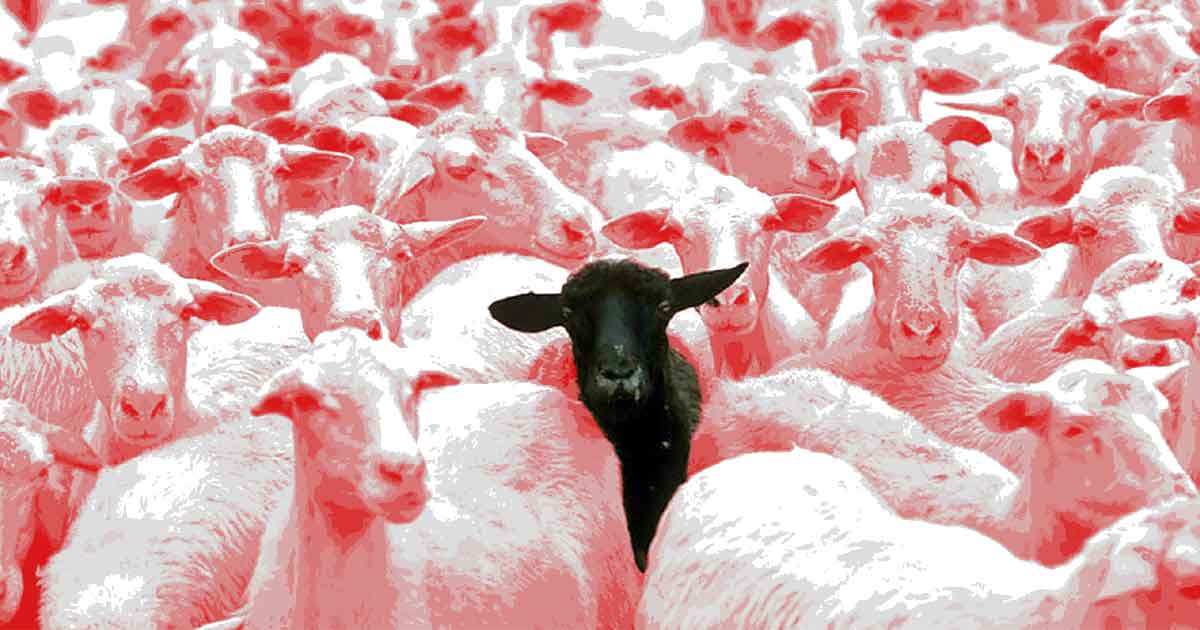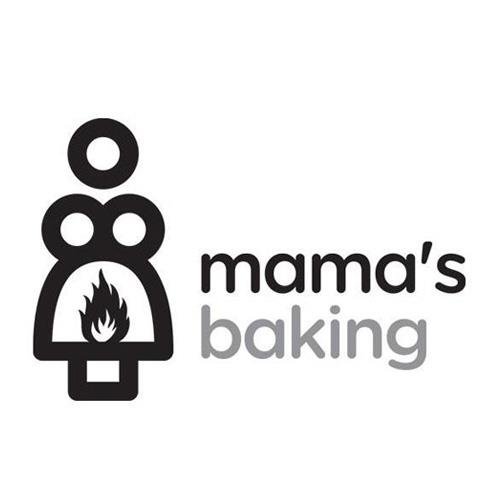
The Paradox of Choice
Unraveling the Mysteries of Consumer Behavior: A Deep Dive into the Classic Jam Experiment
Introduction: Decoding Consumer Choices
As a seasoned marketer, at a leading marketing consultancy in Singapore, we’ve learned that understanding consumer behavior is akin to unlocking a treasure trove of insights that can propel your business to new heights. One seminal study that sheds light on this intricate web of decision-making is the classic jam experiment conducted by Sheena Iyengar and Mark Lepper.
Setting the Stage: The Jam Dilemma
Picture this: you stroll into a grocery store, greeted by rows of colorful jars filled with delectable jams. The choices seem endless, yet daunting. Should you opt for the tried-and-tested strawberry jam or venture into uncharted territory with exotic flavors like mango-peach? This dilemma encapsulates the essence of consumer decision-making – a delicate balance between familiarity and exploration.
The Experiment Unveiled
Intrigued by the nuances of choice, Sheena Iyengar, a pioneering psychologist, devised an experiment to explore how consumers navigate the abundance of options. The premise was simple yet profound: What happens when you present shoppers with a plethora of choices versus a more limited selection?
Methodology: From Shelves to Survey
Iyengar and Lepper set up a tasting booth in a gourmet grocery store, showcasing an extensive array of jams – a whopping 24 varieties. On alternate days, they pared down the selection to a mere six flavors. Customers were invited to sample the jams and, if inclined, make a purchase.
The Surprising Results: Quality vs. Quantity
The findings of the jam experiment were nothing short of revelatory. While the extensive display attracted more attention, with throngs of curious shoppers milling around, it was the smaller selection that emerged victorious in terms of sales.
Quality Overwhelms Quantity
Despite the allure of abundant choices, consumers faced with a limited selection were more likely to make a purchase. Delving deeper, Iyengar and Lepper discovered that too many options led to decision paralysis – a phenomenon where the abundance of choices hinders rather than facilitates decision-making.
Implications for Small Business Owners
Small business owners, listen up. While the classic jam experiment may seem like a simple study conducted in a grocery store, its implications are profound, especially for those of you navigating the complex world of marketing on a tight budget. Let’s delve into how these findings can revolutionize your approach to product offerings, customer experience, and overall business strategy.
1. Product Assortment and Decision Overload
One of the key takeaways from the jam experiment is the concept of decision overload. As a small business owner, you may feel compelled to offer a wide range of products or services to cater to diverse customer preferences. However, the study suggests that too many options can overwhelm consumers, leading to decision paralysis and, ultimately, fewer purchases.
Action Point: Instead of inundating your customers with an extensive array of choices, focus on curating a select assortment of products or services that align with your brand identity and cater to your target audience’s specific needs. By offering fewer options, you can streamline the decision-making process and increase the likelihood of conversion.
2. Positioning and Differentiation
Another crucial insight from the jam experiment is the role of positioning and differentiation in consumer decision-making. Participants were more likely to make a purchase when presented with a limited selection of jams, highlighting the importance of standing out in a crowded marketplace.
Action Point: As a small business owner, it’s essential to identify your unique selling proposition (USP) and communicate it effectively to your target market. Whether it’s superior quality, innovative features, or exceptional customer service, emphasize what sets your brand apart from competitors. By carving out a distinct niche, you can attract customers who value what you have to offer and are willing to make a purchase.
3. Customer Engagement and Experience
Beyond product assortment and positioning, the jam experiment underscores the significance of customer engagement and experience. The researchers found that participants were more satisfied with their choices and more likely to return for future purchases when they had a positive interaction with the product.
Action Point: Invest in creating memorable experiences for your customers at every touchpoint, from the moment they discover your brand to post-purchase interactions. Whether it’s through personalized marketing campaigns, responsive customer support, or seamless online shopping experiences, prioritize building meaningful connections with your audience. By fostering loyalty and satisfaction, you can turn one-time buyers into repeat customers and brand advocates.
4. Data-Driven Decision Making
Lastly, the jam experiment highlights the value of data-driven decision-making in marketing. By analyzing consumer behavior and preferences, businesses can gain valuable insights into what drives purchasing decisions and tailor their strategies accordingly.
Action Point: Leverage data analytics tools and consumer research to gain a deeper understanding of your target audience and market trends. Track key metrics such as conversion rates, customer retention, and average order value to identify areas for improvement and optimization. By harnessing the power of data, you can make informed decisions that drive business growth and profitability.
In conclusion, while the classic jam experiment may seem like a trivial study, its implications for small business owners are anything but. By embracing the principles of simplicity, differentiation, customer-centricity, and data-driven decision-making, you can elevate your marketing efforts and unlock new opportunities for success in today’s competitive landscape.
Personal Reflections: Lessons Learned in the Trenches
Reflecting on my own journey as a marketer, I’ve encountered countless instances where the principles elucidated by the jam experiment ring true. From refining product offerings to optimizing user experiences, the mantra of simplicity and focus has guided my strategic endeavors.
Conclusion: The Art of Choice Architecture
In the labyrinth of consumer decision-making, the classic jam experiment serves as a beacon of clarity. By understanding the delicate interplay between choice and cognition, small business owners can craft more compelling narratives, simplify decision-making processes, and ultimately, carve out a distinct place in the hearts and minds of their customers.
Summary
People often think more means more. The more information we have, the more options to choose from, the better the final outcome and the happier we’ll be. Often, however, the opposite is true: the more choices we have, the higher our expectations become – and the more we worry about making the ‘wrong’ decision. Enter the ‘Paradox of Choice’.
A classic experiment by Sheena Iyengar demonstrates this neatly:
Supermarket shoppers were presented with a variety of jam samples to try.
On day one, 6 different jams were available for tasting.
On day two, 24 different jams were available for tasting.
Any guesses on which day resulted in more sales?
With fewer options, 40% of the shoppers tried the jams and 30% made a purchase.
With more options, 60% tried the jams, but just 3% made a purchase!
The conclusion: “choice is alluring but confusing”.
What does this mean? Keep things simple, limit options and keep testing.
More = difficult.
Written by : Mark Rowland
Mark's been working in and interested in all things marketing since 2010.










